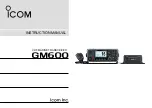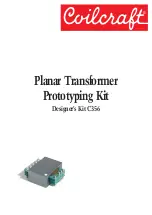
65-2451RK Hydrogen Transmitter • 5
2.
At the monitoring site you select, hang or mount the junction box with the detector
facing down (see Figure 2).
Wiring the Hydrogen Transmitter to a Controller
WARNING: Always verify that the power to the controller is off before you make
wiring connections.
1.
Turn off power to the controller.
2.
Place the controller’s power switch in the OFF position.
3.
Remove the junction box cover.
4.
The detector leads are factory wired. Verify that the detector leads are wired to the
amplifier’s detector terminal strip as shown in Figure 3.
5.
To gain access to a plug-in terminal strip for wiring, pull it out of its socket by
grasping the terminal strip and pulling. The detector strip is keyed so that the
controller and detector terminal strips cannot be reversed inadvertently.
6.
Guide a three-conductor, shielded cable or three wires in conduit through the top
conduit hub of the junction box.
7.
Pull out the controller terminal strip, and connect the three wires to the terminal strip
as follows (see Figure 3).
•
Connect the positive wire to the
PWR/SIG “+”
terminal.
•
Connect the signal wire to the
PWR/SIG “
S”
terminal.
•
Connect the negative wire to the
PWR/SIG “-”
terminal.
CAUTION:
If shielded cable is used, leave the cable shield’s drain wire disconnected and
insulated at the transmitter. You will connect the opposite end of the cable’s drain
wire to the controller’s chassis (earth) ground.
8.
Reinstall the controller terminal strip into its socket.
9.
Secure the junction box cover to the junction box.
10. Route the cable or wires leading from the hydrogen transmitter through one of the
conduit hubs at the controller housing.
CAUTION:
Do not route power and transmitter wiring through the same controller conduit hub.
The power cable may disrupt the transmission of the transmitter signal to the
controller.
11. Connect the wires to the applicable detector/transmitter terminal strip at the
controller as shown in Figure 3.
www.
GlobalTestSupply
.com
Find Quality Products Online at:





































